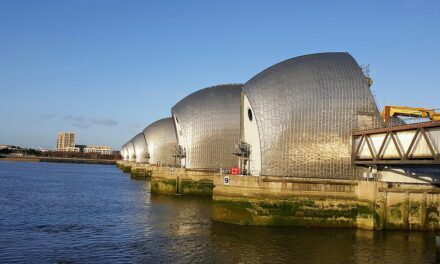
The Thames Barrier
The Thames Barrier is the world’s second largest flood defence system. Without it, the sides of the Embankment would have to be so tall they would obliterate Londoners’ view of the Thames itself. More importantly, a huge area of London would be at risk of flooding, including the underground rail network. Fortunately, it is planned for the present Thames Barrier to remain in place against storm surges and any other rise in sea level until 2070, whereupon it will be replaced.
There have been floods from the North Sea in the past, of course, but it was the one in 1953, which claimed 307 lives, that gave the impetus to build the ten-gate steel dam on concrete piers and sills fixed to the chalk riverbed. The Thames Barrier and Flood Protection Act of 1972 eventually gave the go-ahead. The project took eight years and cost £535 million.
It is now operated by the Environmental Agency, who test the gates monthly and at the spring high tide. The Thames Barrier Duty Controller makes the decision as to whether to open or close the gates, acting on information received from various weather monitoring stations, including satellites. Since 1982 that crucial decision has been taken almost two hundred times.
(Image: Mechtraveller at Wikimedia Commons / CC BY-SA 4.0)
